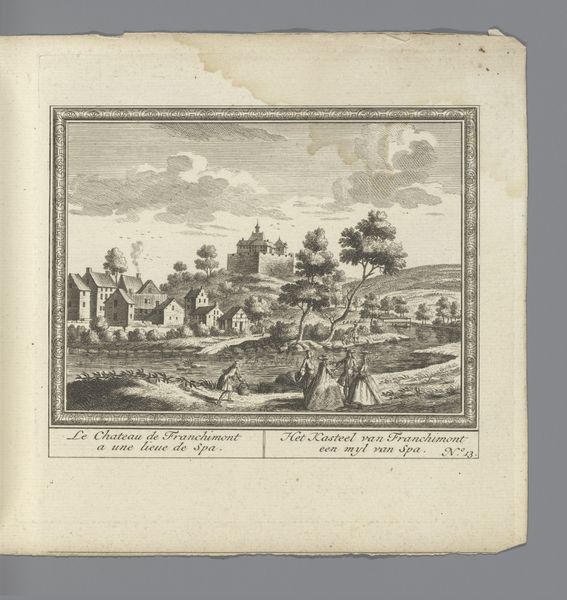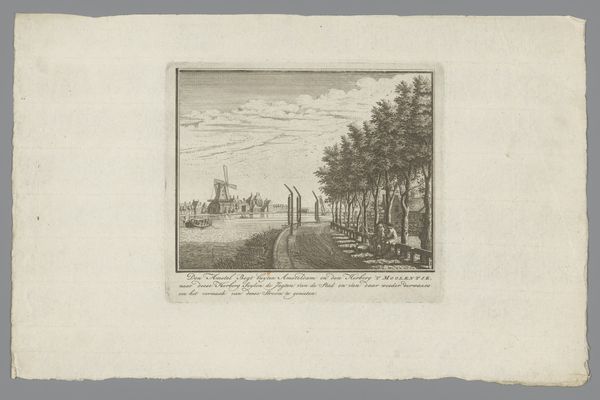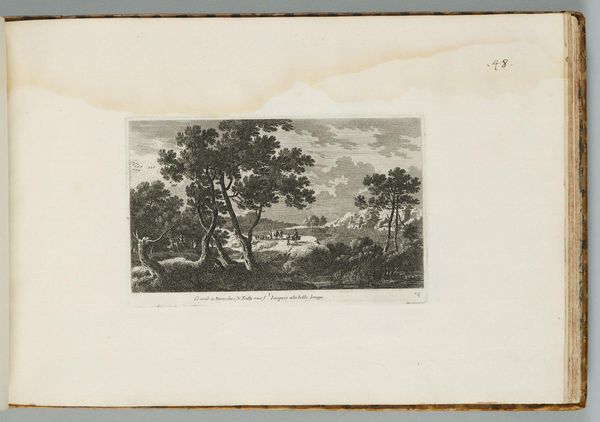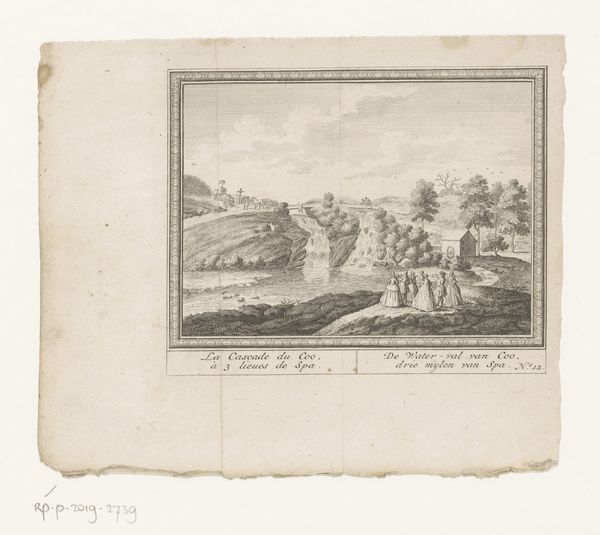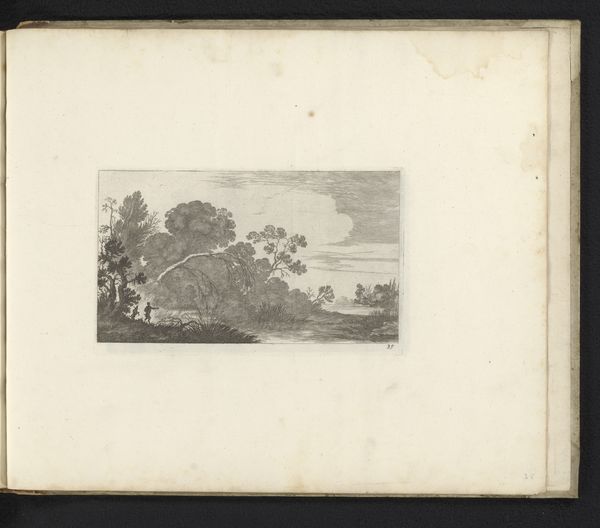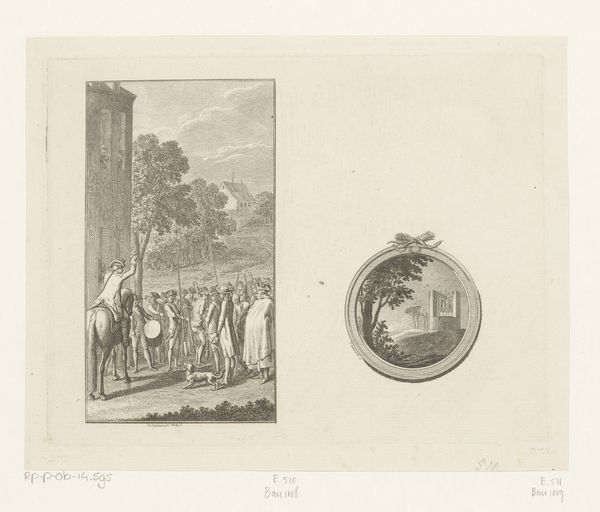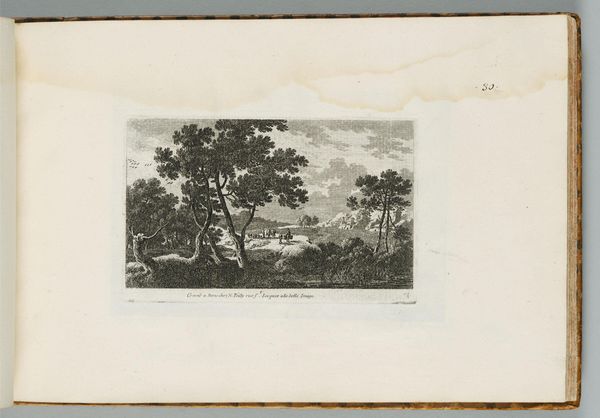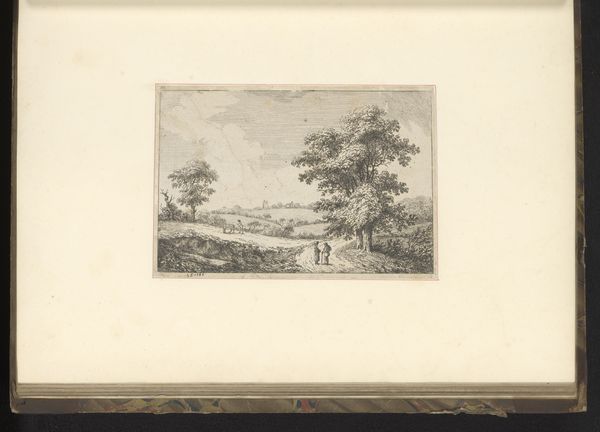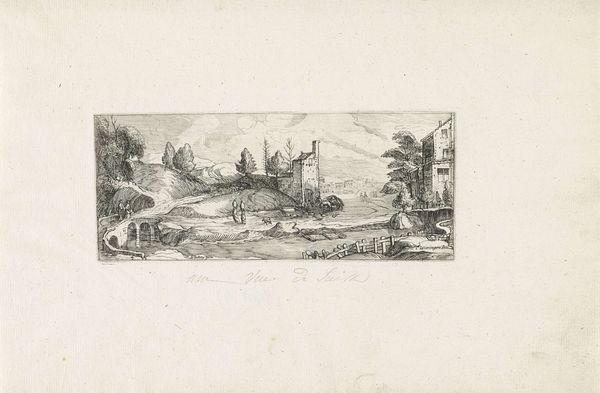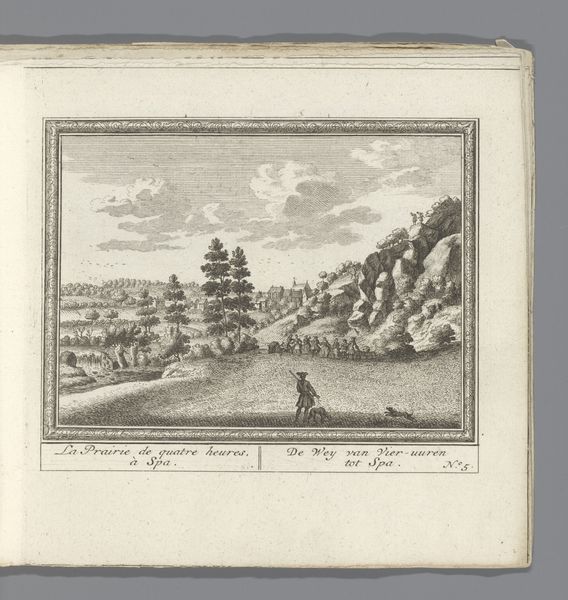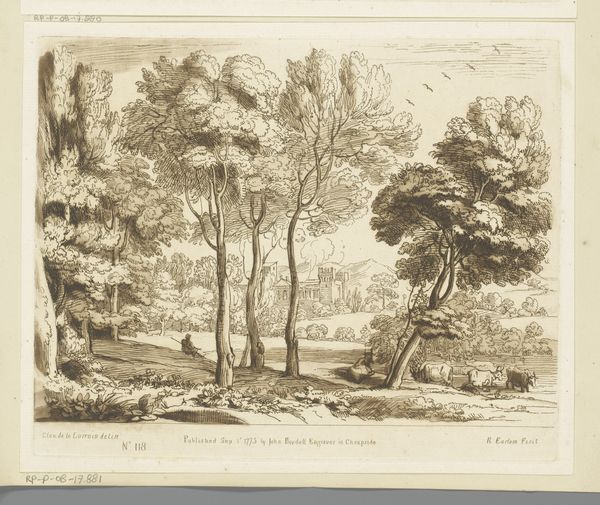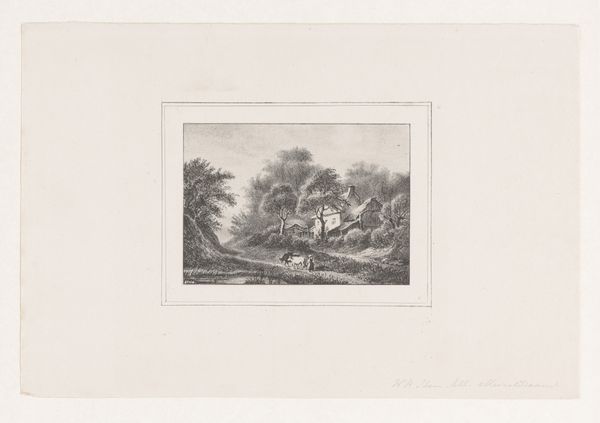
drawing, print, paper, ink, engraving
#
drawing
#
baroque
#
dutch-golden-age
# print
#
landscape
#
paper
#
ink
#
cityscape
#
watercolour illustration
#
genre-painting
#
engraving
Dimensions: height 140 mm, width 333 mm
Copyright: Rijks Museum: Open Domain
Editor: Here we have "Gezichten op Gunterstein en de brug in Breukelen," Views of Gunterstein and the bridge in Breukelen, made around 1725 by Abraham Rademaker. It's an ink and paper engraving that seems to depict a tranquil scene. What are your thoughts when you look at this work? Curator: What strikes me immediately are the conditions of its making and reproduction. Look at the labour involved in engraving these detailed scenes not once, but twice on a single sheet! This isn't just about picturesque views, it is a study of repeatable manufacture, of how an image is commodified and distributed to a wider audience. Think of the artist as a skilled artisan participating in the booming print industry of the Dutch Golden Age, where demand for such landscape views flourished alongside trade and commerce. Editor: That’s interesting. I hadn't considered the duplication of the image itself. It makes me think of the availability of art… Curator: Exactly! The printmaking process inherently speaks to wider availability and distribution. It challenges the traditional understanding of a unique "masterpiece". How do we reassess our understanding of art, particularly landscape art, when we look at it not just as aesthetic representation, but as a product of its socio-economic context? Were these mass-produced prints a symbol of luxury, of wealth? What does this tell us about class and material possessions in the Dutch Golden age? Editor: So it's not just the view of the landscape that's important but also the physical labor and consumption that the print represents? Curator: Precisely. The work’s value resides not only in its artistic depiction but in the historical web of its production, distribution and consumption. We need to look past the representational aspects and analyze the very material conditions that gave rise to it. Editor: That shifts my perspective completely. Now, I see a meditation on commerce as much as a landscape. Curator: Exactly! Material reality shapes what we create and consume as art.
Comments
No comments
Be the first to comment and join the conversation on the ultimate creative platform.
